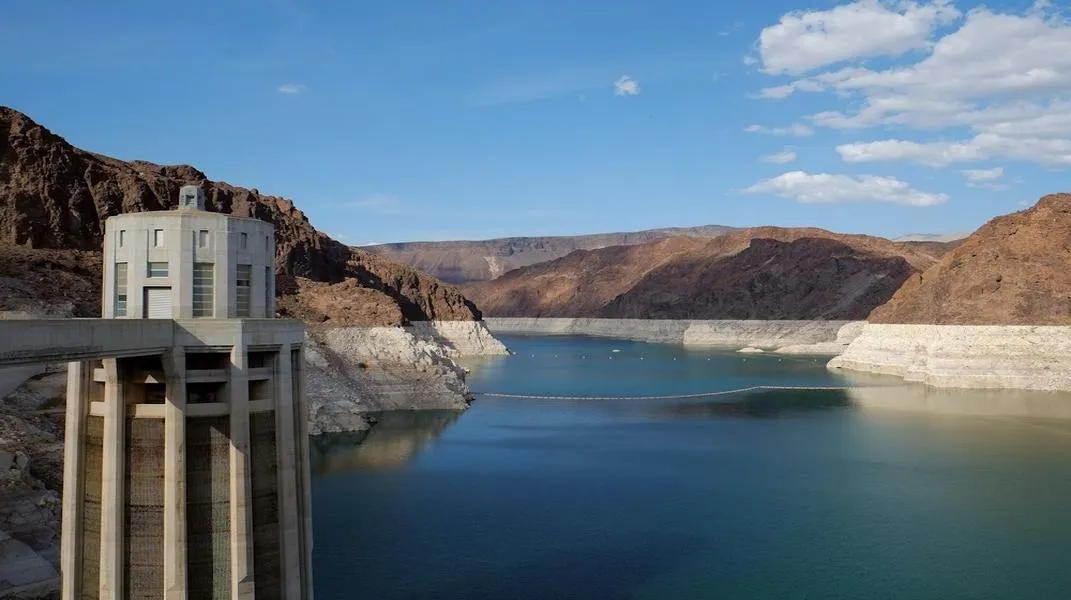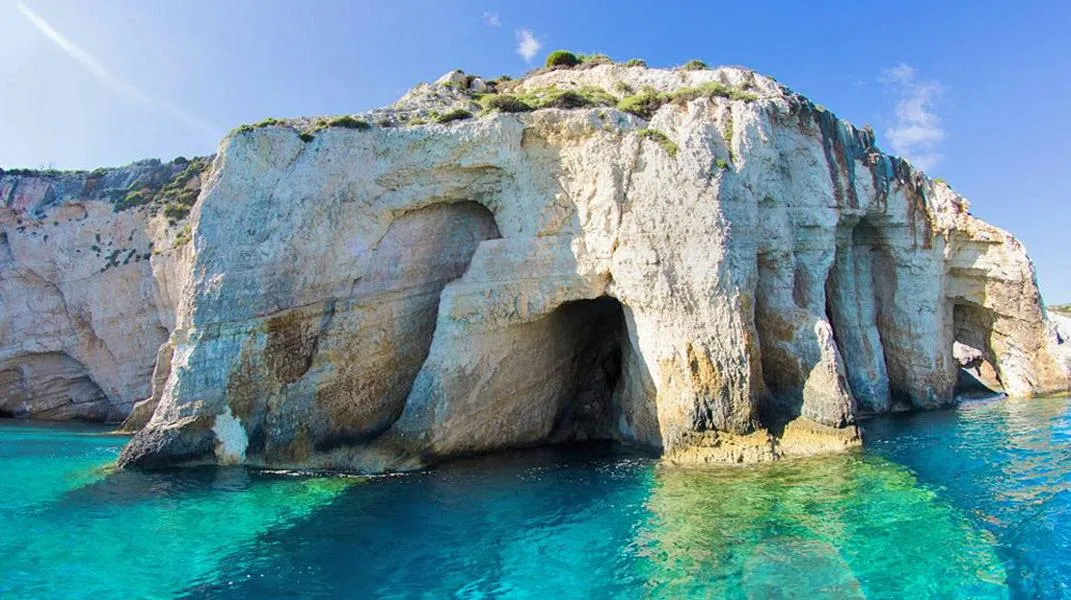Exploring Lake Mead: A Jewel of the American Southwest
Nestled in the heart of the Mojave Desert, Lake Mead is a stunning reservoir formed by the Hoover Dam and is one of the largest man-made lakes in the United States. Covering over 247 square miles and stretching across Nevada and Arizona, Lake Mead National Recreation Area is a popular destination for outdoor enthusiasts, families, and anyone looking to experience the natural beauty of the American Southwest. This article will delve into the attractions, activities, and preparations necessary for a visit to Lake Mead, ensuring you have an unforgettable experience.

A Brief History
Lake Mead was created in the 1930s when the Colorado River was dammed to control flooding, provide irrigation, and generate hydroelectric power. Named after Elwood Mead, a former commissioner of the U.S. Bureau of Reclamation, the lake is not only an engineering marvel but also a critical water source for millions of people in the southwestern United States.
The Hoover Dam, an architectural wonder in itself, stands as a gateway to the lake, attracting millions of visitors each year. The dam, built between 1931 and 1936, is a National Historic Landmark and offers tours that provide insight into its construction and significance.
Natural Beauty and Geography
The natural beauty surrounding Lake Mead is breathtaking. The lake is framed by rugged mountains and desert landscapes, with stunning vistas that vary dramatically with the changing light throughout the day. The contrasting colors of the deep blue water, the earthy browns and reds of the surrounding cliffs, and the vibrant greens of desert vegetation create a picturesque setting that is perfect for photography and exploration.
Lake Mead is part of the larger Lake Mead National Recreation Area, which encompasses over 1.5 million acres of diverse ecosystems, including desert, wetlands, and canyons. This ecological diversity makes it a haven for wildlife enthusiasts, as the area is home to a variety of species, including bighorn sheep, coyotes, and numerous bird species.
Activities at Lake Mead
1. Boating and Water Sports
One of the main attractions of Lake Mead is its vast expanse of water, making it a prime spot for boating, jet skiing, kayaking, and paddleboarding. The lake has several marinas, including the popular Lake Mead Marina and Callville Bay Marina, where visitors can rent boats or launch their own. The calm waters and scenic surroundings make for an exhilarating day on the lake.
2. Fishing
Lake Mead is also renowned for its fishing opportunities. Anglers can expect to catch species such as striped bass, largemouth bass, catfish, and rainbow trout. The best times for fishing are early morning or late evening when the temperatures are cooler, and the fish are more active. Make sure to check state regulations and obtain the necessary fishing licenses before casting your line.
3. Hiking and Biking
For those who prefer to explore on foot or by bike, Lake Mead offers an extensive network of trails that showcase the area's natural beauty. Popular hiking trails include the Historic Railroad Trail, which features a gentle incline and stunning views of the lake, and the more challenging Black Canyon Trail, which leads to beautiful overlooks and unique geological formations.
Biking is also a popular activity, with many trails suitable for cyclists of all skill levels. Rentals are available at various locations, making it easy to explore the area on two wheels.
4. Camping
Camping at Lake Mead provides an immersive experience in nature. The park offers several campgrounds, including Boulder Beach, Cottonwood Cove, and Echo Bay. Each campground has its own unique features, such as proximity to the water, shade from trees, and restroom facilities. Reservations are recommended during peak seasons, as spots can fill up quickly.
5. Wildlife Viewing
The diverse habitats found within Lake Mead National Recreation Area make it an excellent location for wildlife viewing. Birdwatchers can spot numerous species, including ospreys, eagles, and herons. For land animals, keep an eye out for bighorn sheep, jackrabbits, and desert tortoises. Early mornings and late afternoons are the best times for spotting wildlife, as animals are more active during cooler parts of the day.
6. Scenic Drives
If you prefer to soak in the stunning scenery from the comfort of your vehicle, Lake Mead offers several scenic drives. The Lakeshore Road, which runs along the shoreline, provides incredible views of the lake and surrounding mountains. The drive to the Hoover Dam is another must-do, as it allows visitors to appreciate the engineering marvel while enjoying the stunning desert landscape.
Preparing for Your Visit
To fully enjoy your visit to Lake Mead, it’s essential to be well-prepared. Below is a comprehensive list of materials and considerations to take into account before embarking on your adventure.
1. Essential Gear
- Water: Staying hydrated is crucial, especially in the desert climate. Bring plenty of water bottles or a hydration pack, particularly if you plan on hiking or engaging in other strenuous activities.
- Sunscreen and Sunglasses: The sun can be harsh, so protect your skin and eyes with high-SPF sunscreen and UV-blocking sunglasses.
- Hat and Clothing: A wide-brimmed hat will provide shade and additional sun protection. Lightweight, breathable clothing is recommended, as temperatures can soar during the day but drop significantly at night.
- Footwear: Comfortable hiking shoes or sturdy sandals are a must for exploring trails or walking around the campgrounds.
2. Camping Supplies
If you plan on camping at Lake Mead, make sure to pack the following:
- Tent and Sleeping Gear: Ensure your tent is suitable for the weather conditions. Bring sleeping bags and sleeping pads for a comfortable night’s sleep.
- Cooking Gear: A portable camp stove, cooking utensils, and food storage containers are essential for preparing meals. Don’t forget to pack a cooler with perishable items.
- Camp Chairs: Comfortable chairs for relaxing around the campfire will enhance your camping experience.
- First Aid Kit: Accidents can happen, so having a basic first aid kit on hand is a good precaution.
3. Fishing Supplies
If you plan on fishing, ensure you have the necessary equipment:
- Fishing Rod and Tackle: Bring your fishing gear, including rods, reels, bait, and tackle boxes. Check local regulations for any specific requirements.
- Fishing License: Obtain a fishing license before your trip, as it is required for anglers over the age of 12.
4. Navigation and Safety
- Maps and GPS: While smartphones can provide navigation assistance, it’s advisable to have a physical map of the area as a backup, as cell service can be spotty in remote locations.
- Emergency Kit: Pack an emergency kit with essentials such as a flashlight, extra batteries, matches, and a whistle.
5. Reservations and Permits
- Camping Reservations: If you plan to camp, make reservations ahead of time, especially during peak seasons. This can often be done through the National Park Service website.
- Park Pass: To access Lake Mead National Recreation Area, you’ll need to pay an entrance fee or have a valid national park pass. Passes can be purchased online or at the entrance stations.
6. Plan Your Itinerary
Before your visit, take some time to plan your itinerary. Consider the activities you want to prioritize, such as boating, hiking, or visiting the Hoover Dam. Be sure to account for travel time between locations and allow for some flexibility in your schedule to enjoy spontaneous adventures.
Conclusion
Lake Mead is a remarkable destination that offers a perfect blend of natural beauty, outdoor adventure, and historical significance. Whether you’re looking to spend a relaxing day on the water, embark on a scenic hike, or camp under the stars, Lake Mead National Recreation Area has something for everyone. By preparing adequately and considering the various activities available, you can ensure a fulfilling and memorable trip. So grab your gear, gather your family and friends, and set out to explore this stunning gem of the American Southwest.




